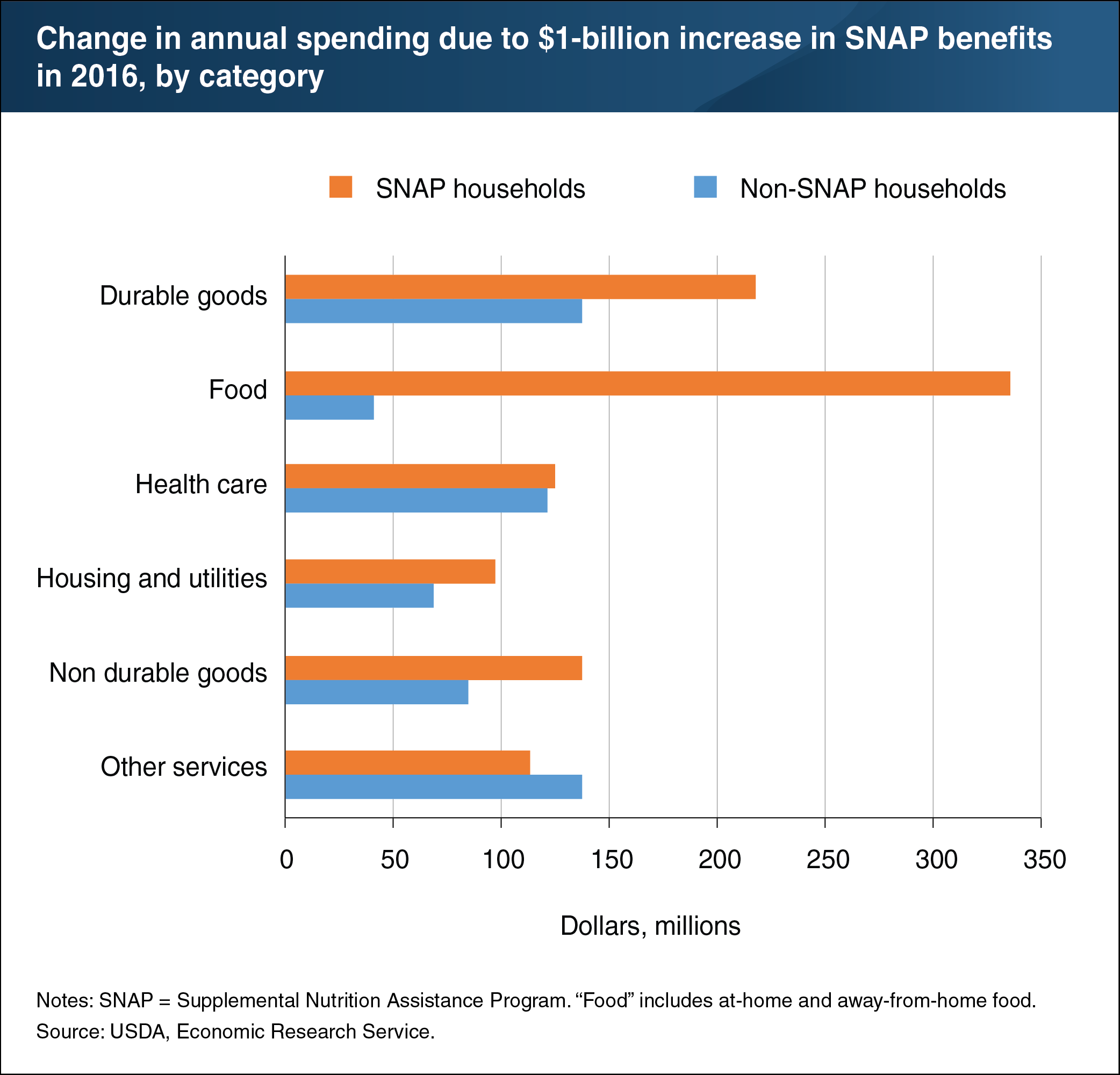Higher SNAP benefits expand spending on other goods as well as food
- by Patrick Canning
- 7/30/2019

When participants in USDA’s Supplemental Nutrition Assistance Program (SNAP) spend their benefits, the spending “multiplies” throughout the economy because businesses (and their employees) supplying food and other goods purchased by SNAP households have additional funds to make purchases of their own. ERS researchers recently estimated how a $1-billion increase in SNAP benefits would affect spending by SNAP and non-SNAP households. Most SNAP participants spend their own cash in addition to SNAP benefits to purchase adequate food. Thus, SNAP households would spend the full amount of the increased benefits at authorized food stores, but they also would redirect some of the cash that they had been spending on food at home to other goods or services. The additional SNAP benefits would have the largest effect on SNAP households’ spending on food and durable goods. The two top categories toward which non-SNAP households would direct their multiplier-induced additional income were savings and durable goods. Because of their low incomes, most SNAP households are likely to spend the entire income increase rather than save a portion of it. The data in the chart are from the ERS report, The Supplemental Nutrition Assistance Program (SNAP) and the Economy: New Estimates of the SNAP Multiplier, and the Amber Waves article, “Quantifying the Impact of SNAP Benefits on the U.S. Economy and Jobs,” released July 18, 2019.


